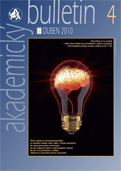
Czech White-Nose Syndrome Team together with international collaborators discovered that mechanisms of tolerance protect Palearctic bats from white-nose syndrome (WNS), the disease that caused mass die-off in North America. The discovery provides hope for the future of bats in North American ecosystems.
White-nose syndrome (WNS) is caused by a generalist pathogen Pseudogymnoascus destructans with
the worst possible characteristics of an infectious fungal agent. The generalist nature of the WNS
fungus means that it can infect any bat hibernating in a contaminated cave or mine and, moreover,
it may remain viable and virulent, waiting for its hosts until the next hibernation period.
Harmless to humans, the WNS fungus kills hibernating North American bats in winter. However, loss
of voracious insectivorous bats from agricultural ecosystems may result in economic costs required
for increased pest control. Without mass die-offs of bats harbouring the WNS agent in Europe, the
response to the disease is an enigma. “Bats here, in Eurasia, are not resistant to the disease,”
says Jiří Pikula from University of Veterinary and Pharmaceutical Sciences in Brno. “The fungus
invades deep into their skin, equally as it does in North America.”
To study the survival crossroads, the Czech WNS Team focused on the relationship between
pathogen quantity and disease under natural conditions. “We investigated WNS prevalence and the
amount of the fungus on bats across the Czech Republic, Slovenia, Latvia as well as West Siberian
Plains in Russia,” says Natália Martínková from the Institute of Vertebrate Biology, Academy of
Sciences of the Czech Republic. “We found high WNS prevalence across species, regions and time
coupled with high fungal load on the surface of bat wings.”
High disease prevalence together with high fungal loads in absence of bat population declines
in Eurasia indicates disease tolerance mechanisms, where hosts limit harm inflicted by the pathogen
but do not hinder its growth. The tolerance mechanism revealed by the Czech WNS Team is a function
of bat adaptation to the presence of the pathogen.
“Our results provide a hopeful lookout for bats in North America,” says Martínková. “Given
time, evolutionary balance between the WNS fungus and its bat hosts may be established and the
survivors could once again flourish in the ecosystem.”
The Czech WNS Team consists of scientists from the Academy of Sciences of the Czech Republic,
University of Veterinary and Pharmaceutical Sciences Brno, Masaryk University and Charles
University in Prague. The research was published on Friday, 29 January in Scientific Reports in
collaboration with colleagues from Slovakia, Slovenia, Latvia and Russia.
Zukal J., Bandouchova H., Brichta J., Cmokova A., Jaron K.S., Kolarik M., Kovacova V.,
Kubátová A., Nováková A., Orlov O. Pikula J., Presetnik P., Šuba J., Zahradníková Jr. A.,
Martínková N.
2016. White-nose syndrome without borders: Pseudogymnoascus destructans infection
tolerated in Europe and Palearctic Asia but not in North America. Scientific Reports, 6, 19829
29 Jan 2016














